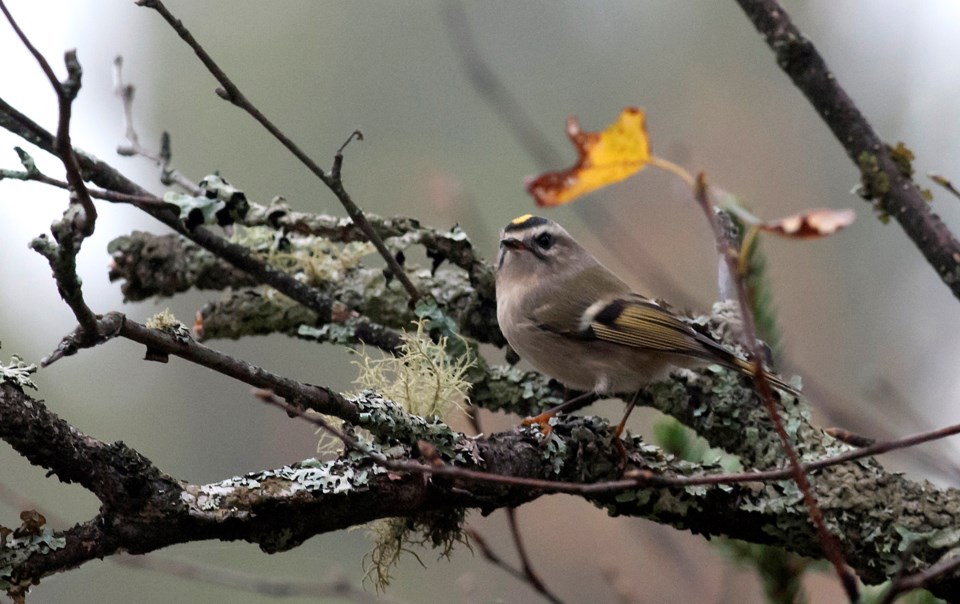There is just enough snow on the ground to warrant the wearing of snowshoes, and as Julie loves snowshoeing, here we are, traversing the trails that follow the rise and fall of our tree farm. As we live in the valley, there always seems to be more rise than fall when out walking.
Having this thick blanket of snow (which has been dismally missing the past few winters), we are finding all sorts of tracks and signs of winter wildlife. Two deer are still wandering about the place, as are two coyotes. It sometimes takes a bit of peering to distinguish the tracks of one species from the other, but with a bit of diligence, a clear impression can be found when the animal ducks under a pine branch and steps onto a thinner layer of snow.
A fisher also pounded through last night, its series of box-like imprints meandering through the pine and oak compartments. Searching for red squirrels, rabbits, grouse, meadow voles and maybe even our cats, this mini-me wolverine patrols a big territory. Finding fisher tracks is not an everyday discovery, but about once a week, a fresh set is observed.
Another member of the weasel family has also been hunting around the shrubs and wood piles, its paired tracks revealing the inquisitive searches of the ermine. Both the fisher and the ermine move by bounding, which is done by the animal landing on its front feet, and then folding its body in half as the rear feet land tightly against the front feet. Now using the rear feet as a launch pad, the body is flexed forward and stretched straight ahead in a good-sized leap to land on the front feet once again.
The resultant impression in the snow is usually a paired imprint, hence my oft-used description of “two and two and two” to figure out this track set.
Julie tends to stop a lot while snowshoeing, which is good as that allows me to catch up and catch my breath. As we chatted about my questionable (to her) methods of tree management, a quick movement above her head caught my attention.
A small bird, but not a chickadee. Busy and not particularly concerned about our presence, yet not the inquisitive nature of the roaming band of black-caps that are usually present here. I do the birdwatchers trick of making a gentle pishing sound, and the bird jumps a bit closer, branchlet to branchlet.
It is a kinglet, one of the smallest birds ever to be seen around here. (Only hummingbirds are smaller.) We visually strain to see the top of its head. Red slash or yellow stripe? This is the way to tell a ruby-crowned kinglet from a golden-crowned kinglet. And a thin yellow stripe it is. (Later, I remembered a ruby-crowned kinglet has a white ring around its eye while the other does not. Ah, the things one forgets.)
The genus name for kinglets is Regulus, which is Latin for “a king,” obviously so named for that distinctive head marking. For some reason, whenever I do have the chance to see a kinglet, I am reminded of the story The Prince and the Pauper. The chickadees are the rough-and-tumble street urchins while the kinglets are the demure and sophisticated royalty. Not a direct comparison to the book, but that’s the way my mind works.
Kinglets are like shrews, in that they must constantly be eating or starve trying. Hence their territory is large (two to three hectares) for a bird their size, as tree after tree must be closely scrutinized and any form of insect eggs or hibernating critters must be found. A deep clean for forest health.
These birds are more often seen in summer than winter, as the core breeding area is the boreal conifer forests of central Ontario, while the wintering grounds are found all across North America. Interestingly, their breeding grounds are shifting a bit to the south as the many white spruce trees people have been planting for the past few decades are now mature. Kinglets build their nests very near the top of these tall spruce, a tiny cup made of lichens, moss, and spider web strands.
As if constantly eating wasn’t a big enough challenge, these birds set themselves up for year-round stress starting with their nests and eggs. A kinglet will lay up to 10 eggs at a time. Ten! From this teeny-tiny bird body! And then it gets even crazier: She will have a second brood as soon as the first set of eggs hatch.
That means Mr. Kinglet has to find food for 10 kids, the missus and himself, every day, all summer long. And just when the first generation has fledged and is leaving the nest, the second brood has hatched and the food gathering challenge continues. This is perhaps the answer to the question as to why this little bird needs such a large territory.
If ever a species needs some family planning intervention, maybe this is the one?
Although being just a tiny puffball of feathers, and being able to survive very frigid temperatures, researchers guess 87 per cent of the kinglets die each winter. So, by having copious numbers of offspring, this mortality is held in check by plain sheer numbers. To me, this does not seem an efficient way to run a population, but, hey, it works.
Speaking of constantly eating, Julie has plunged her snowshoes well ahead of me down the trail (how does she maintain that constant stride?) and calls back over her shoulder that it’s time for lunch. Yes, more Christmas eating! And I wonder why my stride is a slow shuffle.
